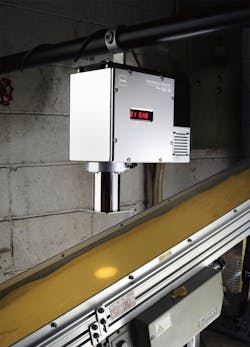Quality control is at the heart of good manufacturing, as inferior goods tend to result in sunk costs at best and disgruntled or unsatisfied customers at worst. In the past, most quality control work has occurred after the fact, with finished goods being inspected in batches to ensure they meet certain standards. However, this approach has several drawbacks. For instance, should a quality defect result from a faulty production process, it may affect an entire batch of finished goods, meaning that they may all need to be disposed of so that the line can be run again.
Luckily, changes in technology are trending away from inspection after that fact and toward real-time, continuous quality assurance methodologies, which allow such prospects to be avoided. In addition to the use of artificial intelligence (AI) and machine learning algorithms to size up production output in real time or even predict issues in advance, more sophisticated sensors also play a large role by providing the necessary input data.
Among the many metrics that manufacturers may track—particularly in process industries such as food and beverage, chemical, pharmaceuticals, or pulp and paper—is moisture. Limiting excess moisture is vital, not only to meet certain regulatory standards, but to ensure proper chemical reactions and drying for pharmaceuticals, as well as maximizing shelf life and deterring mold in the food and beverage space.
“Whether manufacturers are mixing, blending, homogenizing, or drying, non-contact, smart inline technology enables the rapid, automatic measuring of moisture in 100% of product or inputs, along with the ability to instantly fine-tune the process. This can optimize quality as well as minimize waste and corrective re-processing,” said John Bogart, managing director of Kett, a manufacturer of moisture and organic composition analyzers.
Kett provides smart sensors capable of calculating moisture quickly using onboard computing power, a capability made possible by the ever-expanding amount of capacity being packed into ever-smaller microprocessors. Kett’s sensors are also capable of transmitting data in real-time to smart phones, PCs, and other devices even if they are not connected to a plant’s network architecture. In addition, these sensors can automatically send alerts to notify operators when certain parameters and limit conditions have been surpassed. Moreover, storing this data can allow for the tracking of historical performance trends, cyclical rhythms, and periodic failures, helping plant personnel move from a reactive to a proactive approach.
Perhaps just as importantly, by foregoing conventional laboratory testing methods that often require bulky equipment replete with cords and cabling of various sorts, valuable floor space can be saved. This is a growing concern across industry that’s driving numerous trends ranging from modular conveyance options to the use of edge controllers to eliminate the need for control cabinets.
“With typical testing, by the time results come back from the lab, any off-spec product can already be processed, packaged, and shipped. If manufacturers are not measuring in real-time, inevitably there will be some variation in inputs, process, and quality,” Bogart said. “Fitting inline testing equipment into space-restricted production lines can be difficult when wires and cables must be run to a variety of peripheral instruments. In such cases, the cost of labor, installation, and system integration can be as much as the device itself.”
Kett’s approach works by using near-infrared (NIR) light as a non-contact measure, which enables them to collect and transmit several times per second, resulting in real-time metrics that save time, labor, and costs.
According to Bogart, NIR moisture meters can provide highly accurate measurements of solids, liquids, and slurries without any need for contact or sample penetration, meaning there is no risk of contamination. In addition, once the meter has been calibrated to typical laboratory production standards, the calibration data can be stored inside the device so that there is no need for excessive programming or configuration. Monitoring capabilities can also be integrated with the accompanying Kett Tracker data collection and analysis software to improve error detection, defect analysis, and quality results.
“Ultimately, smart moisture measurement technology translates into superior process control, quality, and production without the inherent drawbacks of slower, labor-intensive lab or batch testing,” Bogart said.
About the Author
David Miller
Former Senior Technical Writer

Leaders relevant to this article:

